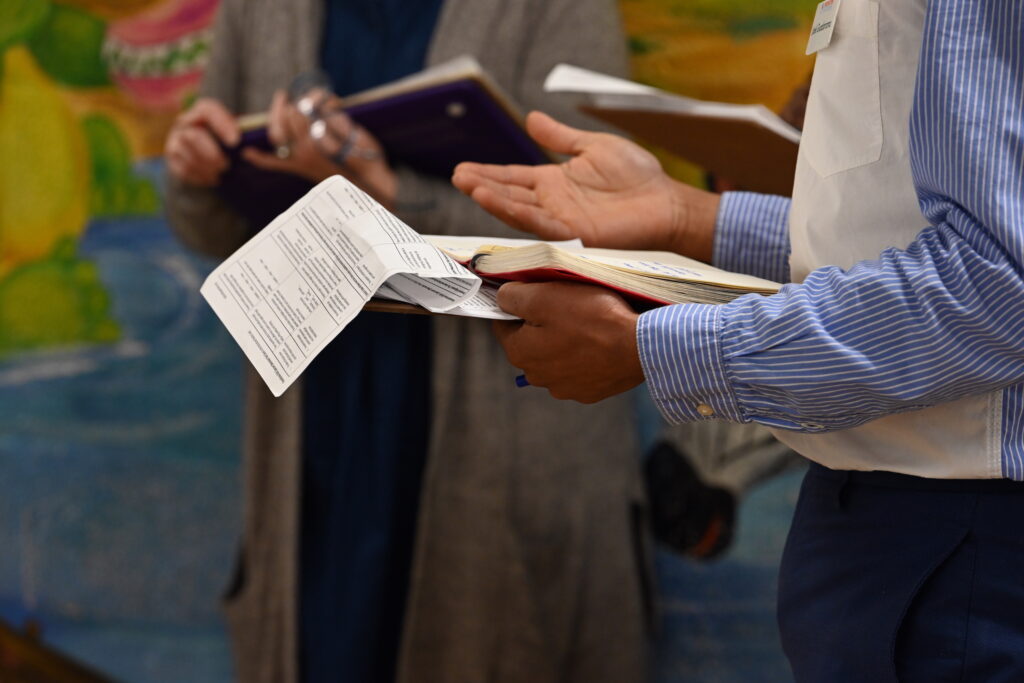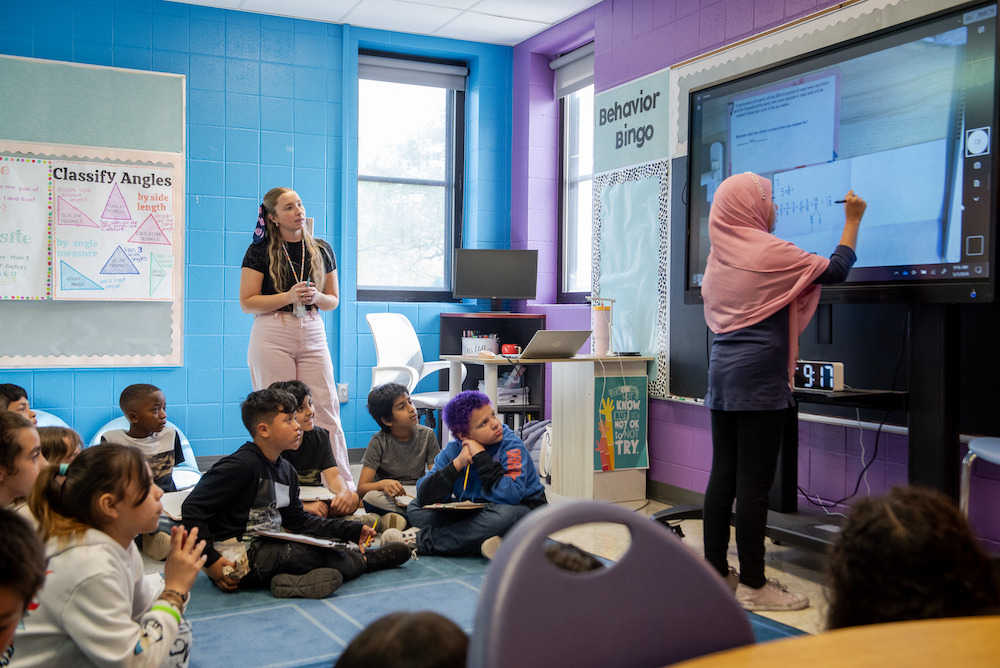
4 Common Pitfalls of Professional Learning
Whether it’s through collaborative planning or classroom observations and feedback, the goal of teacher professional learning (PL) remains the same: educators building skills and knowledge that enhance their teaching practices and, ultimately, improve student learning outcomes.
However, implementing effective teacher PL is easier said than done. We’ve collaborated with hundreds of schools and systems across the country that had PL structures in place but were not seeing any meaningful changes in instruction or student outcomes. And in many of these schools, PL was leading to widespread frustration rather than meaningful teacher support and student progress.
Learn about these common pitfalls below—and how you can avoid them.
Common pitfalls of teacher professional learning
1. There is no shared vision for PL.
Holding time for teacher learning without a clear vision of how PL should impact instruction is like sending your team on a road trip without a map—they’re moving, they know where they want to go, but they’re not sure how to get there.
In our work with schools across the country, we see a lack of vision for PL show up in various challenges:
- Collaborative learning time is overrun by competing priorities, becoming a space for administrative updates.
- The connection between PL activities and schoolwide priorities remains unclear, leaving educators unable to see how their efforts contribute to broader goals for the school community.
- Teachers do not see how the PL time connects to their daily instruction or their students’ needs. There is an underlying sense of compliance rather than genuine buy-in.
- Without a clear direction, there are no progress monitoring routines—resulting in a lack of meaningful feedback for both facilitators and teachers.
Avoiding this pitfall
Your team can avoid this pitfall by developing a vision for each PL structure that is both informed by teachers and communicated to teachers. The vision should guide every PL decision— from how often sessions are held to who leads them and how progress is monitored.
Our visioning tools for collaborative planning and observation and feedback provide step-by-step guidance for gathering a team of diverse stakeholders, writing an actionable vision for PL, and communicating the vision multiple times in a variety of ways (e.g., in email, at a team meeting, in one-on-one check-ins). A clear vision for PL will provide leaders and teachers with a common language and help cultivate a cohesive learning community—so that you can all work together to move toward your destination: stronger instruction and improved learning outcomes for students.
2. PL is not aligned to the instructional materials.
Imagine this scenario: A school community selected and adopted a new math curriculum. Teachers completed training from the curriculum provider over the summer and are excited to start using the materials with students. However, upon returning to school, they find themselves navigating weekly planning protocols that don’t use the same language as the curriculum, while receiving feedback from leaders that is at odds with the curriculum’s intended design.
We see schools run into this PL pitfall when leaders are not engaged with the curriculum implementation process and/or when PL facilitators are not trained on new materials. Providing conflicting guidance to teachers on implementing their curriculum can lead to widespread frustration and undermine the credibility of school leaders.
Avoiding this pitfall
Teachers want to know that their school leaders understand the work that they are doing and know how to support them in that work. We know that digging into a new curriculum can be overwhelming for school leaders, particularly when dealing with multiple subject areas and grade levels. We encourage instructional leaders to embrace the role of ‘lead learners’ and actively engage with the materials alongside teachers to better understand the story of the curriculum and the support teachers might need.
As a first step, we recommend that leaders complete a curriculum study to better understand how to tailor teachers’ professional learning and feedback routines to the instructional materials. This resource provides a structured agenda for exploring various aspects of the curriculum, including year-long scope and sequences, unit/module overviews, and supporting materials. By studying the curriculum, leaders better position themselves to plan for the type of ongoing support that teachers and students need to succeed with high-quality instructional materials.
3. There is not enough time set aside for preparation.
This pitfall is twofold: it concerns not only the design of the professional learning experience, which should incorporate adequate time for teachers to practice instructional strategies, but also the readiness of the facilitator.
Facilitators need ample time to prepare for PL sessions, ensuring they can effectively support and guide teachers through the learning process. There might be scheduled time for weekly PLCs, but if the facilitators don’t have enough time to prepare, they will be ill-equipped to anticipate and address teachers’ misconceptions about the curriculum or to tailor their guidance to meet teachers’ demonstrated needs. Without such preparation, collaborative learning time risks becoming superficial “sit and get” sessions.
For teachers, this pitfall means a missed opportunity to actively practice and internalize new strategies or concepts in a supportive environment. Teachers may have a high-level understanding of the curriculum, but when it comes to putting specific strategies into practice with students, they struggle because they haven’t had enough hands-on experience with the lesson material during PL sessions.
Avoiding this pitfall
To avoid this pitfall, leaders need to treat collaborative learning time as critically as classroom time by modeling the kind of detailed preparation and practice they expect from their teachers. For example, an instructional coach can review a lesson prior to PLCs and identify the components that might require new or challenging instructional moves for teachers. Preparation would include creating authentic opportunities for teachers to practice these moves with each other and anticipating possible questions or misconceptions about the materials. Making this shift from just telling teachers what to do to creating an environment where they can collaborate, reflect, and practice is key to impactful PL.
In short, it’s important to remember that the way teachers support students mirrors the way leaders support teachers. Instructional leaders should ask themselves: How do your interactions with teachers model the ways you want teachers to interact with students? In what ways might your PL contradict the learning experiences you want to create for students?
4. There is no progress monitoring or follow-up support.
Let’s say your teachers spent their collaborative learning time practicing specific teaching skills in alignment with their curriculum. How do you know if that session was effective?
Without follow up after a learning session, it’s difficult to gauge whether teachers are successfully implementing new skills in their classrooms or if they need additional support. This can lead to a frustrating cycle for teachers in which they’re introduced to new practices but do not have the time or guidance to master them fully before being asked to move on to something else. Abrupt shifts between PL sessions can leave teachers feeling overwhelmed, without the chance to solidify their understanding and application of new skills.
Avoiding this pitfall
We’ve found that ongoing observation and feedback cycles allow leadership teams to support meaningful improvement while staying responsive to the real-time needs of teachers and students.
For example, after an initial PL session, leaders should observe classroom instruction to see how teachers are applying what they learned with their students. Based on these observations, they can provide teachers with personalized feedback and plan follow-up learning sessions based on trends across classrooms. This feedback loop helps identify ongoing needs and areas for future PL, ensuring that teachers feel supported and confident in mastering one area before moving to another. Our Sample Observation and Feedback Tracker can be used to track teachers’ progress over time.
Such a focused and responsive approach not only clarifies the PL process but also empowers teachers to create challenging and engaging learning experiences for students, promoting deeper understanding and skill development.
You may have noticed that many of these pitfalls are interconnected. For instance, the lack of alignment to instructional materials often stems from a lack of vision for PL, while a lack of follow up might be a consequence of inadequate preparation time for PL facilitators.
This interconnectedness points to the need to focus on improving the underlying conditions for teacher support across a school or system. We spent the last several years developing resources to help leaders strengthen their conditions for PL. That project resulted in the Professional Learning Conditions and Practices, which include detailed, step-by-step action plans that address seven conditions for effective PL along with rubrics to help leaders understand the current state of each.
Download free resources to help your team avoid PL pitfalls and get started on a pathway to effective PL.


